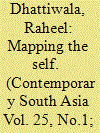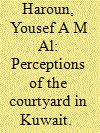| Srl | Item |
| 1 |
ID:
152347


|
|
|
|
|
| Summary/Abstract |
Ethnic riots in India rarely lead to convictions of perpetrators and redress for victims. By implication, antagonisms prevail years after violence has ceased and victims often find themselves sharing everyday spaces with their attackers. The task of identifying the risk factors leading to ethnic violence as well as the nuances of coexistence for individuals ridden with memories of violence and prejudice is rife with methodological and ethical challenges. Concerns surrounding data quality are enhanced when the researcher is also an insider. In a study spanning 26 months (undertaken between 2010 and 2015), I examine the challenges of an insider researcher in the context of Hindu–Muslim violence that occurred in Gujarat in 2002, and offer techniques to improve data quality. Strategies include the cross-verification of sources within official data; interviewing respondents in group and individual settings to address the attitudinal fallacy; and employing respondent-empowered cognitive maps. I argue that visual data, such as cognitive maps, enable a better understanding of abstract social concepts and also facilitate a balance between distance and involvement for the insider researcher.
|
|
|
|
|
|
|
|
|
|
|
|
|
|
|
|
| 2 |
ID:
172439


|
|
|
|
|
| Summary/Abstract |
The courtyard was once found in every house in Kuwait. It was a multi-purpose open space where the entire family would gather and socialize. Some courtyards had a tree or shrub, and most would have a well. This all changed after the discovery of oil. In the 1950s Kuwait underwent rapid and unprecedented urbanization and within a decade was transformed from a small shaikhdom to a modern regional metropolis. Kuwaitis were forced into a new lifestyle. The Kuwaiti house changed from the courtyard house, sustainable, private and inward-facing, into the modern villa, full of new technology, and facing outward toward the street. In this study, the courtyard is used as a vehicle to examine a number of socio-cultural, economic and political aspects of the move towards modernity in the domestic built environment and away from the vernacular and sustainability. Investigating several questions that have been raised in prior research, this study aims to identify the qualities and uses of the courtyards that people might value and use in the contemporary house. A mixed-method approach has been employed to provide qualitative data to support and complement quantitative findings. The article’s ultimate aim is to add to our understanding of how how people have dealt with and adapted to the collision between traditional concepts and modernity. Among the findings is the existence of a surprising disconnect between past realities and current perceptions, even about what a courtyard is.
|
|
|
|
|
|
|
|
|
|
|
|
|
|
|
|